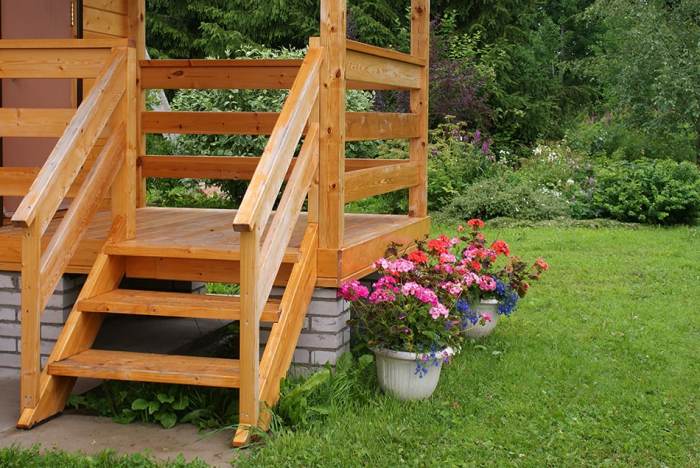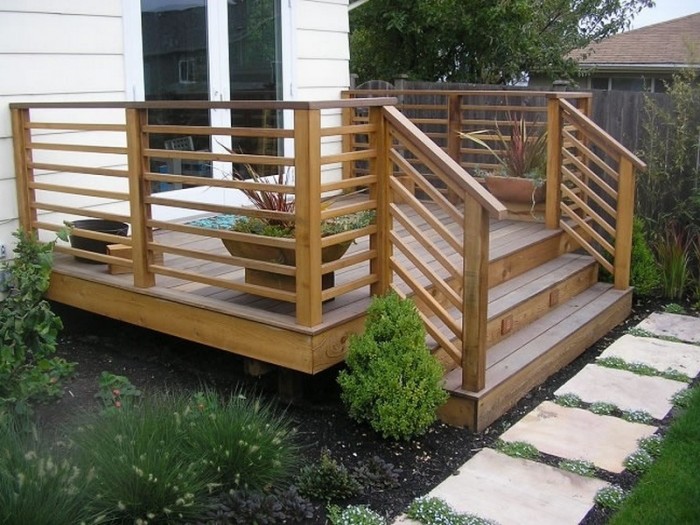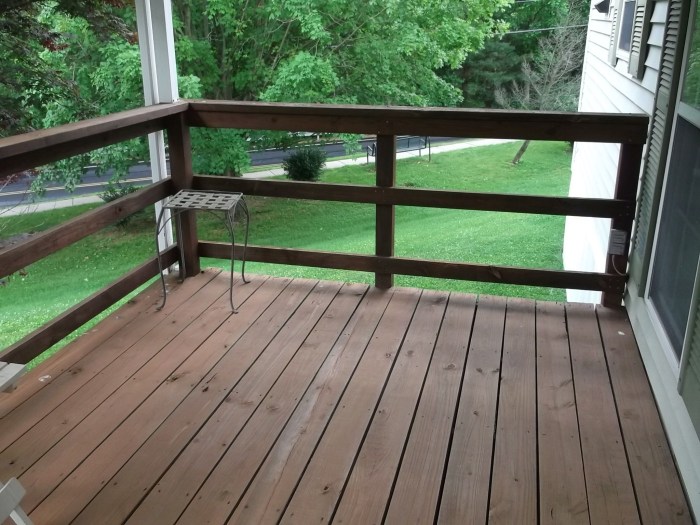Horizontal porch railings are a crucial element of any outdoor living space, providing both safety and style. Whether you’re looking to update the look of your porch or build a new one, understanding the design, installation, and maintenance of horizontal porch railings is essential.
In this comprehensive guide, we’ll delve into the various design elements, functional considerations, installation techniques, and maintenance tips to help you create a safe and aesthetically pleasing horizontal porch railing that will enhance the enjoyment of your outdoor space.
Design Elements
Horizontal porch railings are a key design element that can enhance the aesthetics and functionality of your outdoor space. They provide safety and support while also adding a touch of style to your porch. There are a wide range of design elements to consider when choosing a horizontal porch railing, including the type of material, the style of the balusters, and the height of the railing.
Materials
Horizontal porch railings can be made from a variety of materials, including wood, metal, and composite materials. Each material has its own unique advantages and disadvantages.
- Wood is a classic choice for horizontal porch railings. It is relatively inexpensive and easy to work with, and it can be stained or painted to match the color of your home. However, wood is not as durable as other materials, and it can rot or warp over time.
- Metal is a more durable option for horizontal porch railings. It is resistant to rot and warping, and it can be powder-coated to match the color of your home. However, metal is more expensive than wood, and it can be difficult to work with.
- Composite materials are a newer option for horizontal porch railings. They are made from a combination of wood and plastic, and they offer the best of both worlds. Composite materials are durable and easy to work with, and they are not as expensive as metal.
Balusters
Balusters are the vertical posts that support the top and bottom rails of a horizontal porch railing. They can be made from a variety of materials, including wood, metal, and composite materials. The style of the balusters can also vary, from simple square posts to more ornate designs.
Newels
Newels are the posts that are located at the ends of a horizontal porch railing. They are typically larger and more decorative than the balusters, and they can be used to add a touch of style to your porch. Newels can be made from a variety of materials, including wood, metal, and composite materials.
Height
The height of a horizontal porch railing is an important safety consideration. The railing should be high enough to prevent people from falling off the porch, but it should not be so high that it obstructs your view.
Choosing a Design
When choosing a design for a horizontal porch railing, there are a few factors to consider.
- The architectural style of your home: The style of your porch railing should complement the architectural style of your home. For example, a simple railing with square balusters would be a good choice for a traditional home, while a more ornate railing with curved balusters would be a better choice for a Victorian home.
- The desired level of privacy: If you want to create a more private porch, you can choose a railing with solid panels or closely spaced balusters. If you want a more open railing, you can choose a railing with spaced balusters or open panels.
Functional Considerations
When designing and installing horizontal porch railings, safety and code compliance are paramount. Railings serve as a protective barrier, preventing falls and ensuring the safety of occupants and visitors. It is crucial to adhere to building codes and industry standards to ensure the railings meet the required specifications for height, spacing, and load resistance.
The height of the railing is a critical factor. Residential porch railings typically range from 36 to 42 inches in height, while commercial railings may be higher to accommodate specific safety requirements. The spacing between balusters or pickets should not exceed 4 inches to prevent children from slipping through.
These dimensions are crucial for preventing falls and ensuring the railings effectively fulfill their protective purpose.
Loads on Horizontal Porch Railings
Horizontal porch railings are subjected to various types of loads, including wind loads and snow loads. Wind loads can cause lateral forces on the railings, especially in areas prone to high winds. Snow loads, particularly in regions with heavy snowfall, can create significant weight on the railings.
It is essential to consider these loads when designing the railings to ensure they can withstand the anticipated forces without compromising their structural integrity or safety.
Installation Techniques
Installing horizontal porch railings involves careful preparation and precise execution to ensure stability and durability. The process typically includes preparing the surface, attaching the posts, and installing the railings.
The specific steps may vary depending on the type of surface and the materials used. However, the general principles remain the same.
Surface Preparation
Before installing the railings, the surface must be properly prepared. This involves cleaning the area, removing any debris, and ensuring that the surface is level and free from any irregularities.
For concrete surfaces, it may be necessary to drill holes to accommodate the posts. For wooden surfaces, it is important to ensure that the wood is strong enough to support the weight of the railings.
Attaching the Posts
The posts are the vertical supports that hold the railings in place. They are typically made of metal or wood and are attached to the surface using bolts or screws.
The posts should be spaced evenly along the length of the railing and should be securely fastened to the surface. The height of the posts will determine the height of the railings.
Installing the Railings
The railings are the horizontal members that run between the posts. They are typically made of metal or wood and are attached to the posts using bolts or screws.
The railings should be spaced evenly along the length of the railing and should be securely fastened to the posts. The width of the railings will determine the spacing between the posts.
Maintenance and Repair
Maintaining and repairing horizontal porch railings is crucial for ensuring their longevity and safety. Regular cleaning, inspections, and timely repairs can prevent damage and extend the life of the railings.
To maintain horizontal porch railings, follow these tips:
- Clean the railings regularly with a mild detergent and water solution. Avoid using harsh chemicals or abrasive cleaners.
- Inspect the railings periodically for any signs of damage, such as loose or broken balusters, cracked or warped spindles, or damaged posts.
- Tighten any loose screws or bolts promptly.
Common Repairs
Common repairs for horizontal porch railings include:
- Replacing balusters or spindles: If balusters or spindles become damaged or broken, they can be easily replaced by unscrewing the old ones and screwing in new ones.
- Repairing or replacing posts: If posts become damaged or rotten, they may need to be repaired or replaced. This is a more complex repair that should be performed by a qualified professional.
- Repainting or staining: Over time, the paint or stain on horizontal porch railings may fade or peel. Repainting or staining the railings can restore their appearance and protect them from the elements.
By following these maintenance and repair tips, you can ensure that your horizontal porch railings remain safe and attractive for many years to come.
Closure
By considering the design elements, functional considerations, and maintenance requirements discussed in this guide, you can create a horizontal porch railing that meets your specific needs and enhances the overall appeal of your home. Whether you’re a homeowner looking to upgrade your porch or a contractor seeking to provide your clients with the best possible solution, this guide has provided you with the knowledge and insights to make informed decisions.



